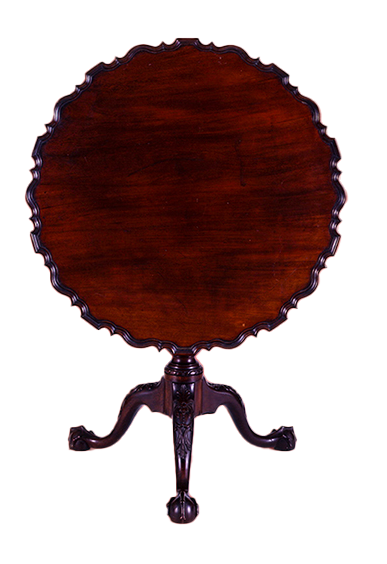The mahogany used to make this table was extracted from the forests of various Caribbean islands by enslaved laborers, who worked in strenuous and dangerous conditions to cut down, move, and process the nearly 70-foot tall trees. The wood was then shipped to Philadelphia, where expert cabinetmakers and carvers used it to craft expensive furniture like this table. Too often overlooked, however, are the ways these finished objects bespoke a darker reality. The novelist Charles Dickens would write that mahogany reflected “in the depth of its grain, through all its polish, the hue of the wretched slaves.” We need to listen to their stories as well.
The inhumane circumstances in which mahogany trees were harvested foretold the similarly inequitable conditions in which tea tables like this example were used. Tea drinking involved elaborate preparations and many supplies: A “tea caddy” to hold the costly leaves, a brass or copper tea kettle with kettle stand, a stylish ceramic or silver teapot, teacups, a mahogany or silver tea tray, tea spoons, a strainer, ceramic sugar bowl, and a matching “slop” bowl for discarded tea leaves. All of these beautiful objects created labor for Black household “servants,” free or enslaved. Due to their lack of privilege, let alone basic human rights, most Black men and women’s participation in the tea ceremony was limited to preparing and clearing the table and pouring the hot water from the kettle into the teapot. In affluent colonial households, what remains largely unacknowledged is the way the Black body was reduced to a function shared with the tea table: To serve the white owners.








